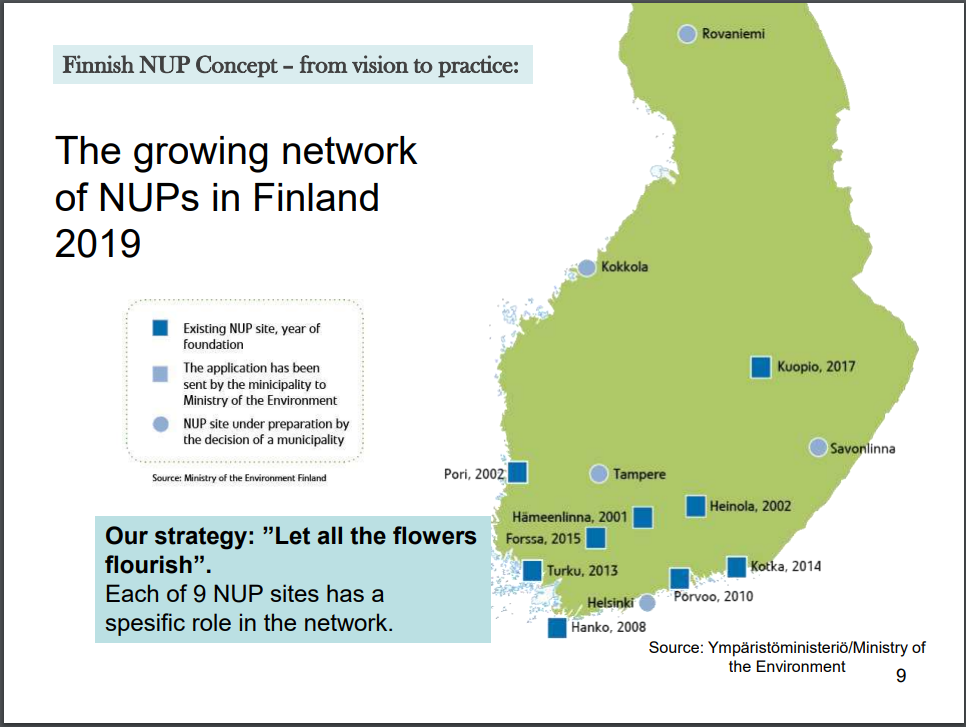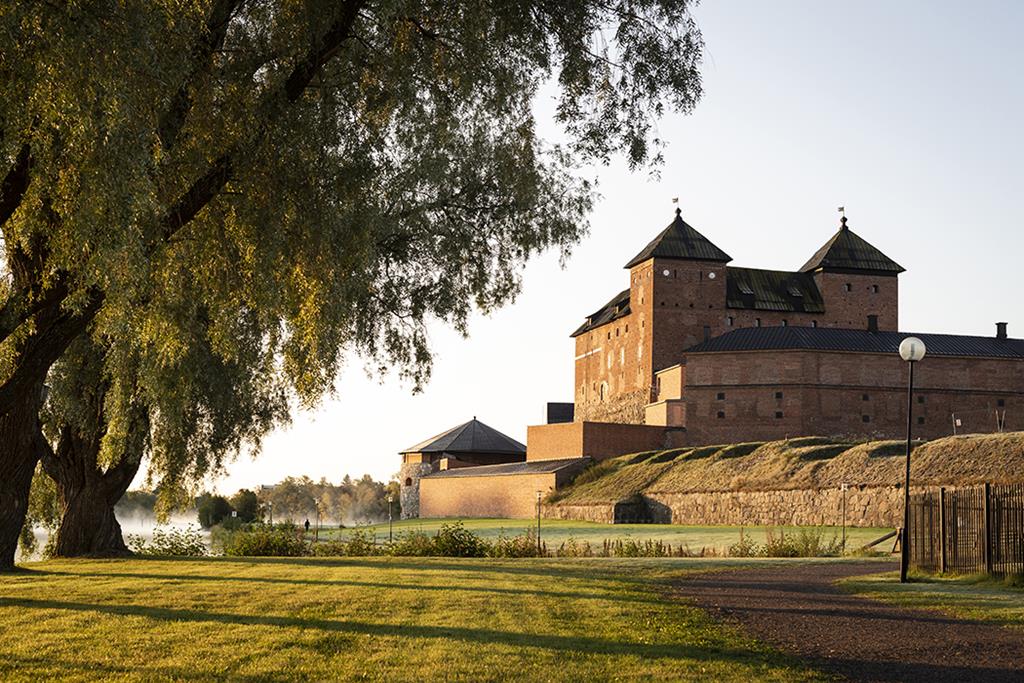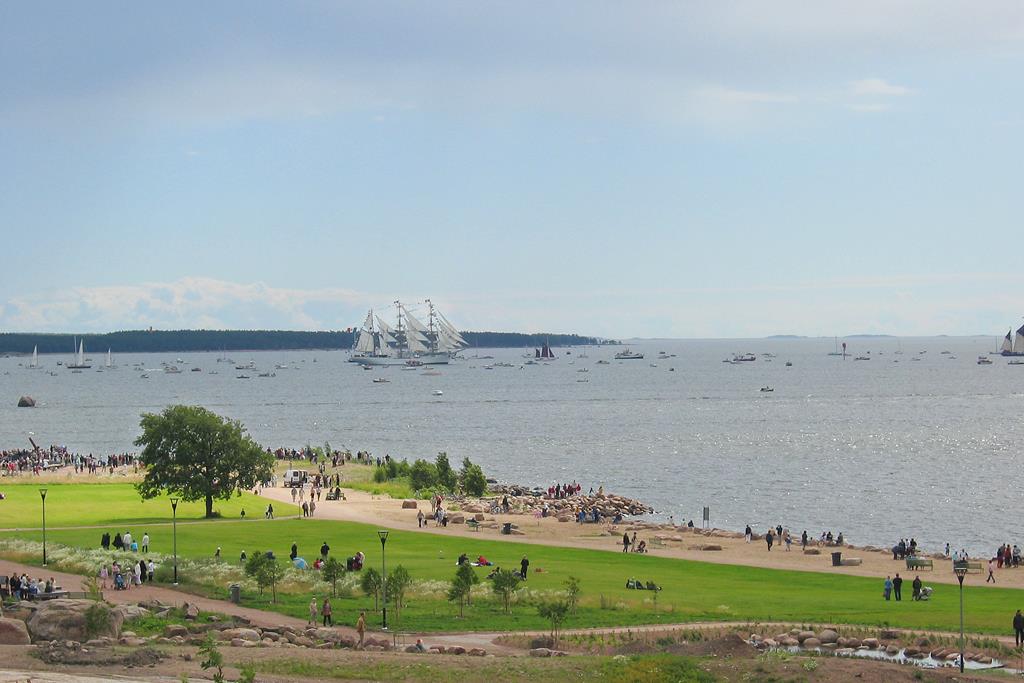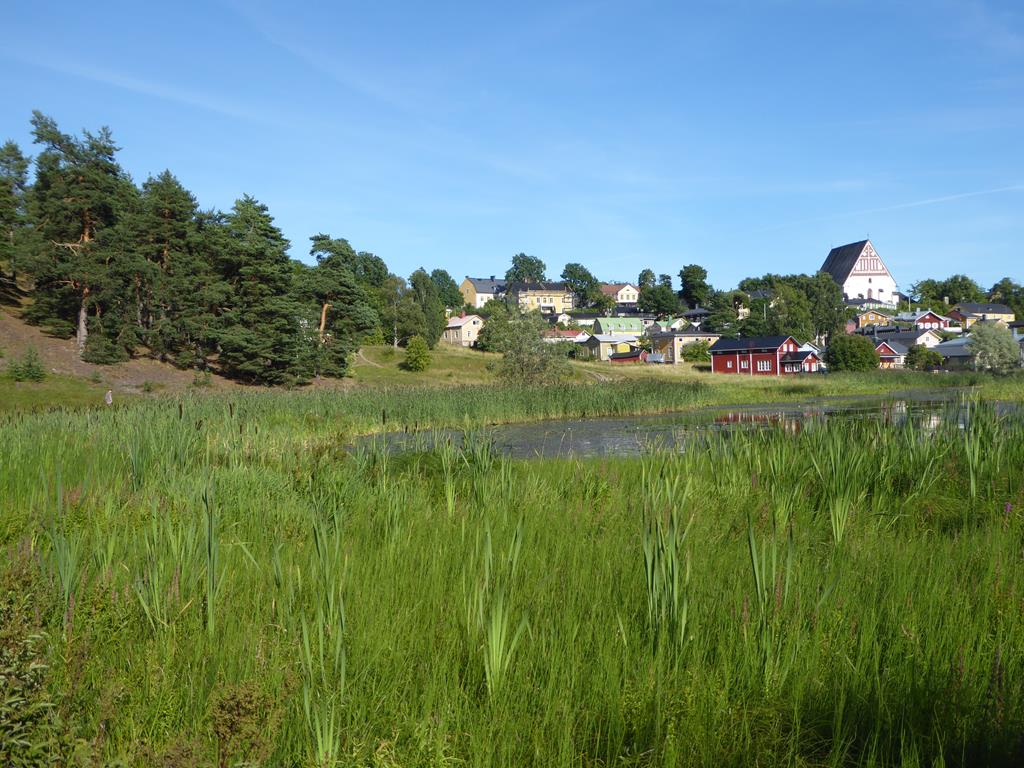Case Study
Finnish National Urban Parks (NUP) – tool for promoting biodiversity in urban areas
Contact name
Jukka-Pekka Flander, Senior adviser, Counsellor of Environment, Finland
Institution name
Ministry of the Environment, Finland
Region & country
Finland, there are National Urban parks in the cities of Hämeenlinna, Heinola, Pori, Hanko, Porvoo, Turku, Kotka, Forssa and Kuopio
Summary
The Finnish National Urban Park (NUP) Concept is a tool for promoting biodiversity in urban areas. It helps to build cities in a more sustainable way, protecting nature and green spaces in urban environment. The first Finnish National Urban park was established in 2001 and now Finland has a network of 9 NUPs.
In each of the park, there are historic buildings and blocks, parks, recreational areas and urban nature. In most NUPs natural heritage forms the biggest part of the area. In all NUPs there are one or more protected areas, Natura 2000 –sites, old growth forests – even sea, lake and river ecosystems. National Urban Park is an integrated urban space with a high natural and cultural environment and part of a wider ecological whole.

Finnish National Urban Parks
Finnish Ministry of the Environment

Hameenlinna National Urban Park
Finnish Ministry of the Environment

Kotka National Urban Park
Finnish Ministry of the Environment

Porvoo National Urban Park
Finnish Ministry of the Environment
Background of the project
The world’s first national city park was founded in Sweden in 1995 mainly to protect the royal green areas and earlier hunting park from urban pressure. The Swedish case raised the debate in Finland on how to build cities in a more sustainable way, protecting nature and green spaces.
- Urban structure dominates urban planning instead of ecology
- Building causes irreversible changes in urban natural and cultural heritage and identity of cities
- Urban sea and lake bays and wetlands are being filled and built thus changing the shorelines, reducing biodiversity and blocking the views and access of people
- Urbanization is megatrend all over world – also in Finland. Most people want to live in an urban environment that has easy access to green area.
Solution and actions taken
Creating National Urban Parks as a tool and method. Finnish National Urban Park (NUP) concept was taken as part of the Land Use and Building Act, which came into force on 1.1.2000. The purpose of a NUP is to preserve urban nature and built cultural environments so that they form a comprehensive, integrated whole. They are part of sustainable city planning and building.
Creating criteria for NUPs:
1. Breadth of content,
2. Extent and contiguousness,
3. Ecology and continuity,
4. Urban centrality
The main principles of the Law:
- Preparation: The municipality applies and the Ministry of the Environment decides.
- Ownership: Land owners in NUP can be municipalities, state, public entities and private.
- Protection: By land use plans and different Acts
- Management plan: The values of a NUP are managed by a management plan drawn up by the municipality and approved by Ministry of the Environment.
Other institutions or parties involved
Participatory planning including municipalities and regional authorities, residents, NGOs was essential in different stages of applying and managing National Urban Park.
Results
Today, the network of NUPs includes areas from nine cities in Finland. The biggest national urban park site with the area of 20 sq. km is under preparation in City of Kokkola on the Western uplift cost of Finland. In Helsinki, the capital of Finland, the results of six-year study have been put into political discussion and decision-making. National urban parks are part of the Finnish biodiversity strategy.
Challenges
At first, it was difficult to get all municipal politicians to get to understand that the protection of natural- and cultural heritage is, in fact, the essential tool for the sustainable development of the city. For some cities, the preparatory process (5-10 years) became too long. During that time, the city`s political decision makers might have changed and the new ones were not committed to preparatory work and goals.
Lessons learned
– ”From bottom to up” preparation and decision process, ”let all the flowers flourish” strategy and technical criteria to supplement the legislation were good
– For communal decision makers and residents, it is a learning process about the importance of urban nature and the need to integrate ecological views in city planning.
– Indirect economic benefits from the new status, for example in the tourism sector, require long-term marketing
Contact name
Jukka-Pekka Flander, Senior adviser, Counsellor of Environment, Finland
Institution name
Ministry of the Environment, Finland